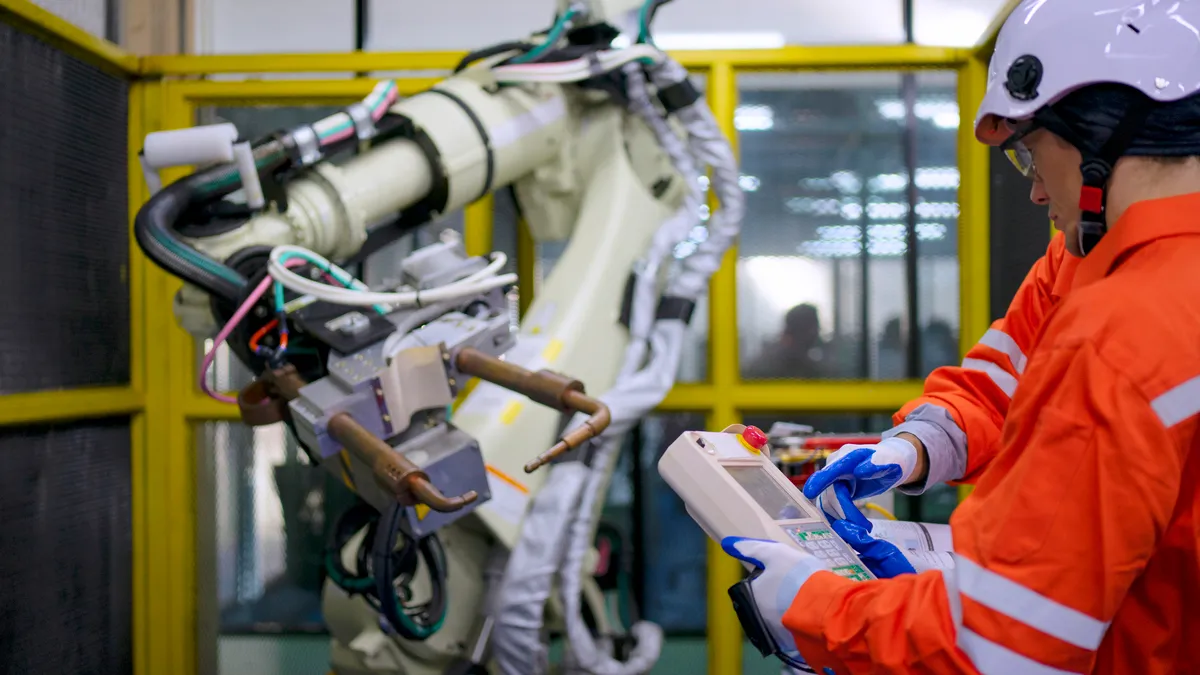Add engagement to the list of employer concerns going into 2023.
Back in March, a Challenger, Gray & Christmas survey found that more than 80% of HR executives were concerned about talent leaving their organizations, with many citing a lack of engagement with off-site workers as a pain point.
Months later, a Conference Board survey found similarly declining engagement levels, although the organization noted little variation among remote, hybrid and on-site workers on the subject.
Whether on-site presence truly factors into engagement, it’s clear that many employers are thinking through how they can improve retention — of which engagement is a crucial component — in a pandemic-driven environment of flexibility.
Meta, the parent company of Facebook, Instagram and extended reality technology firm Reality Labs, believes the answer to that question could lay in the metaverse. The term describes a proposed, immersive version of the internet that would incorporate virtual reality, augmented reality and other technologies.
The company has already demonstrated potential use cases for its tech, perhaps most prominently through its Horizon Workrooms product. To the uninitiated, Workrooms may be thought of as a video game-like simulation of an in-person meeting in which team members are represented by digital avatars.
Earlier this month, Meta published the results of a targeted sample business survey it said had been conducted with more than 2,000 employees and 400 business leaders across the U.K. and U.S. Among the findings, 74% of business leaders said they had a dedicated budget to invest in AR, VR or the metaverse in 2022. Additionally, 65% of employees said they were more likely to stay in jobs in which they had access to AR or VR.
The results show that employees have expectations not only of their employers’ technological investments, but also in terms of building inclusive communities within an increasingly virtual work environment, Ade Ajayi, head of global sales at Reality Labs, said in an interview. But current remote and hybrid work processes, like video calls, may not be enough.
“One of the findings is that we see that employees feel happiest when they are included at work, and these employees are saying that video calling is stifling that,” Ajayi said. “They’re not getting the same experience of feeling included in the workplace.”
Instead, teams could turn to applications like Workrooms to experience virtual interactions in new ways. Ajayi said his team at Reality Labs periodically meets using the company’s Quest VR devices. The experience is entirely different from a video call, he noted, because users can interact with each others’ avatars and use visual aids like whiteboards to communicate.
He compared immersive tech in the 2020s to mobile phones in the early 2000s. “The expectation is not that you’re going to be on your phone 24/7 or during your entire work hours,” Ajayi said. “There are moments when using your mobile phone is the most productive for what you’re trying to do. The same thing is going to happen with virtual reality [and] augmented reality.”
The HR reality
It is important for employers to acknowledge the gaps that exist when using the collaborative tools that make remote and hybrid work possible, according to J.P. Gownder, VP and principal analyst at Forrester. These tools also can have drawbacks. Gownder said psychological researchers have found evidence of a demonstrable user fatigue experience associated with video calls, for example.
Moreover, the advent of 3D spaces where employees can interact with the kinds of tools offered by Workrooms and similar platforms holds promise, Gownder added; “It is designed to solve problems that are not easily solved otherwise.”
But there are a variety of hurdles employers will need to consider before bringing the metaverse into the fold. VR, for example, has already been employed in a number of training-specific scenarios, but Gownder said companies are generally far from the point at which it would make sense to transition employees toward spending a significant portion of their days in virtual spaces.
“For the leap they would have to make from using Slack or Teams or Zoom to using an avatar in a 3D space, whether it’s with a headset or not, there’s simply more of a learning curve and lack of familiarity,” Gownder said. “It’s a fairly exotic idea at this point for most people.”
Metaverse integration could appeal to certain groups of workers, like those with more technological savvy or those who operate in teams that already have a degree of digital collaboration in place, he added.
Ahead of any large-scale workplace integration, however, HR teams will need to ensure that employees are able to familiarize themselves with the idea of digital collaboration generally, Gownder said. They also may need to onboard workers into metaverse solutions and ensure that change management policies are in place to ensure a smooth transition — not unlike those utilized during the move to remote work.
A gradual evolution
While there is a plethora of discussions among employers about the potential of AR, VR and the metaverse, many of these conversations have yet to produce actual strategic plans for adoption, according to John Kostoulas, vice president analyst and HR tech specialist at Gartner. Moreover, Kostoulas said that he expects workplace adoption of the tech to occur gradually through the middle part of the decade, rather than all at once.
The interest in applications like virtual meetings has seen relative growth amid broader adoption of remote work, Kostoulas added, though that interest may not necessarily result in adoption of VR, AR or metaverse technologies specifically. HR teams will need to think through issues such as cost and the time needed to customize solutions to meet an organization’s specific needs.
“Many organizations are trying to make their onboarding processes more virtual, but that does lead to more inquiries about the use of VR or AR in onboarding? Not necessarily,” Kostoulas said.
The in-person component of hybrid work may help to alleviate some of the tension that can occur when employees work off-site. “Sometimes people make it into this dichotomy between fully remote or being in the office full time, and the truth is if you're trying to build a culture of trust, you can do that one day a week,” Gownder said.
In the meantime, employers may find specific use cases for the metaverse that make sense over time. From a sustainability standpoint, for example, employers could allow for virtual meetings rather than having employees participate in resource-intensive company travel, Gownder said. He noted that, like text messaging and email, VR, AR and the metaverse may be viewed as accretive; the metaverse could fill a space similar to Slack or WhatsApp.
Employers, he added, don’t need to be in a rush to adopt metaverse technologies. Instead, they can perhaps start off with a VR or AR training solution, or a similar use case that has seen more extensive study.













![Salesforce AI's CEO sits onstage across from Cristina Criddle. Screens that say Human[X] hang behind them.](https://imgproxy.divecdn.com/J71WpXWHjr8jmbCw_PX7Cp2YH7Pmo8dP66Pz0SEPfw4/g:nowe:0:104/c:1024:578/rs:fill:1200:675:1/Z3M6Ly9kaXZlc2l0ZS1zdG9yYWdlL2RpdmVpbWFnZS9HZXR0eUltYWdlcy0yMjA0NjUxNDM0LmpwZw==.webp)






